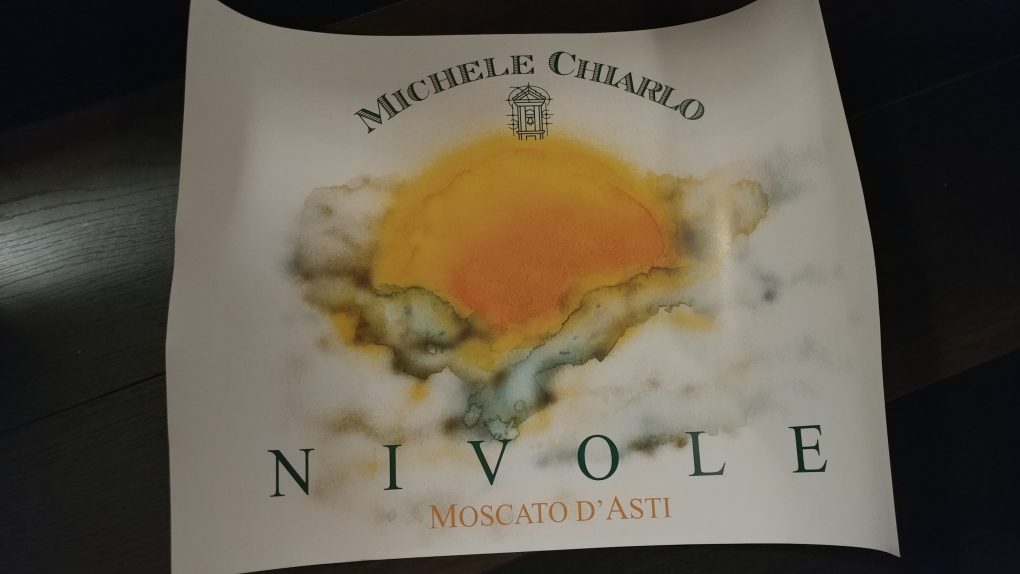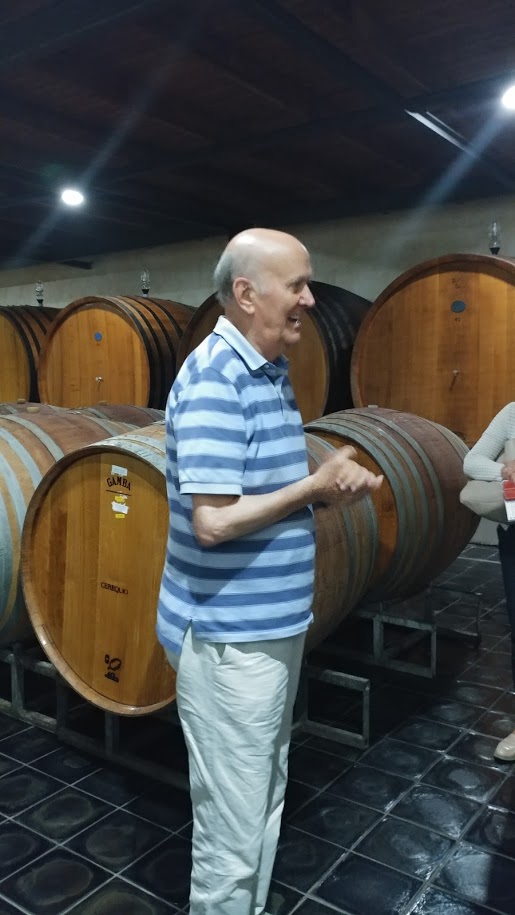It is always a great privilege to meet legends of the wine world – those people who were an instrumental part of real change, who were not just focused on bringing notoriety to their own business or wines, but who experimented with others – took risks – to achieve the excellence that they knew could be achieved by their group. What struck me the most about Michele Chiarlo was his intense passion to continually improve and his indestructibly strong work ethic.

There are some things that never leave us – no matter how much life changes. I was thinking about this as I was recently walking down a street that over 20 years ago, I had walked down many times. The memories that stand out are those that are infused with vivid emotion; those times that I was defeated, crushed by the circumstances of my life and environment are the ones that are crystal clear. I can still feel the tightening in my chest created by panic and emotional pain when I allow my mind to dwell on those moments in my life. For Michele Chiarlo, he spoke about his first harvest, over 60 years ago, and the early days of struggling anonymity as if it happened yesterday.
Barolo

Michele Chiarlo’s name was made with the rise of the glorious reputation of Barolo. He had come from five generations of grape growers, but before Barolo there was no recognition for the sweat, blood and tears of the previous generations – as was the case for many of his fellow local producers in his area as well. Michele’s past efforts did not escape him as he was giving us a vertical of one of his infamous Grand Cru Barolo wines, his Cerequio “Grand Cru”, which we were fortunate to have at his Palas Cerequio (Barolo Cru Resort) overlooking this prestigious vineyard. He spoke about when he was young and a group of Barolo producers (only around 20 to 25 at the time) came together to experiment, many times failing, so they could learn how to make extraordinary Barolo wine from the Nebbiolo grape variety – in his opinion one of the greatest, yet most finicky in the world by only being able to grow properly in a few places.
He painted a picture of how tough those times were… how many set-backs, but they never gave up. They knew that they had something special and they came together to make the sacrifices that were needed to finally make the wine that fine wine connoisseurs now worship.
Barbera and Moscato
Although he knows it is Barolo that has given fame to the Piedmont region, he is still loyal to those wines that have been a part of the Piemontese way of life for centuries. Michele first made Barbera back in 1956. He makes Barbera d’Asti wines at a great value but still fights to keep some planted in top vineyards (Crus) to illustrate its potential for high quality. Also, his unrelenting commitment to making the best Moscato d’Asti wines, a libation that is connected to many a family holiday and celebration, is a reminder that Michele never forgets what is precious in life.

Making the Most of Tough Times
When I look back at those tough times in my life, I would not change them for anything in the world. I admit that at one point, my spirit was broken. But what is wonderful about our spirit is that its ability to mend, and those cracks left behind from painful times can help to give us a reason to want to make the world better for the next generation.
No matter the level of fame Michele has reached, he seems to be a man that is always looking to improve things in the town where he was born – where his winery is still located to this day. Because when our life is all over and done with, it is not the money we have accumulated or all the possessions that we bought that will shape the world into a better place… it is our aspirations… even if they never fully materialized during our lifetime. That is what shapes the world for the better.

Cathrine’s Recommendations
Everyday Drinking Wine (less than $15)
2016 Michele Chiarlo, Le Orme, Barbera d’Asti DOCG, Piedmont, Italy ($13): 100% Barbera. This wine sources Barbera grapes from several vineyards, with no oak used so that it may express the purity of this grape from the Asti area, at a price that makes it a daily go-to wine. The marked acidity, fresh black cherry flavors and hint of dried oregano on the finish made this wine ideal with pasta with red sauces and pizza.
Special Occasion Wine (from $15 to $50)
2016 Michele Chiarlo, Nivole, Moscato d’Asti DOCG, Piedmont, Italy ($20): 100% Moscato Bianco. This is the price for the full size (750ml) bottle, yet there is a half size bottle available for a lower price. Moscato d’Asti wines have a long history in the Piemontese area as this wine has always been drunk on special occasions, such as Christmas. Moscato d’Asti has ended up inspiring a worldwide trend of Moscato wines that are sweet and semi-sparkling (frizzante), but if you want to try the best of this style, you can’t go wrong with finding the approval label from the Consorzio dell’Asti DOCG, and a high quality producer such as Chiarlo. They keep the Moscato must stored in a tank at 28F (-2°C) and ferment it 5-6 times a year to make sure their Moscato d’Asti wines express fresh aromas. This Nivole gave that classic creamy texture with ripe peaches and sage flavors – always delightful.
2014 Michele Chiarlo, Cipressi Nizza, Barbera d’Asti DOCG, Piedmont, Italy ($27): 100% Barbera. Although Michele Chiarlo is known for his legendary Barolo wines, his Barbera wines have always held a special place in his heart. The Cipressi Nizza comes from one of the highest vineyards in altitude for Barbera, known for its higher magnesium in the soil. This 2014 had a lovely transparency, with bright red cherry intermixed with savory notes. It is well-balanced, with lots of flesh on the palate and crisp acidity.
Fantasy Wine (over $50)
2013 Michele Chiarlo,“Grand Cru” Cerequio, Barolo DOCG, Piedmont, Italy ($105): 100% Nebbiolo. Michele Chiarlo generously gave us the 2013, 2011 and 2007 from this outstanding “Grand Cru” Barolo estate. Albeit all great vintages, I have to recommend the 2013 for a couple of reasons. Firstly, it was shockingly harmonious at such a young age, which is a good sign for its ageability. Secondly, it is easier to find on the market. But I do have to say that I thoroughly enjoyed the leathery, structured 2011 and more ethereal, smoky 2007. The 2013 had intense blackberry fruit with layers of complexity, wild game and bouquet of flowers, with a generous elegance and fierce energy that made this a wine too tempting for such a baby. This Cerequio vineyard has marine sediment in its soil that dates back 9 million years.












